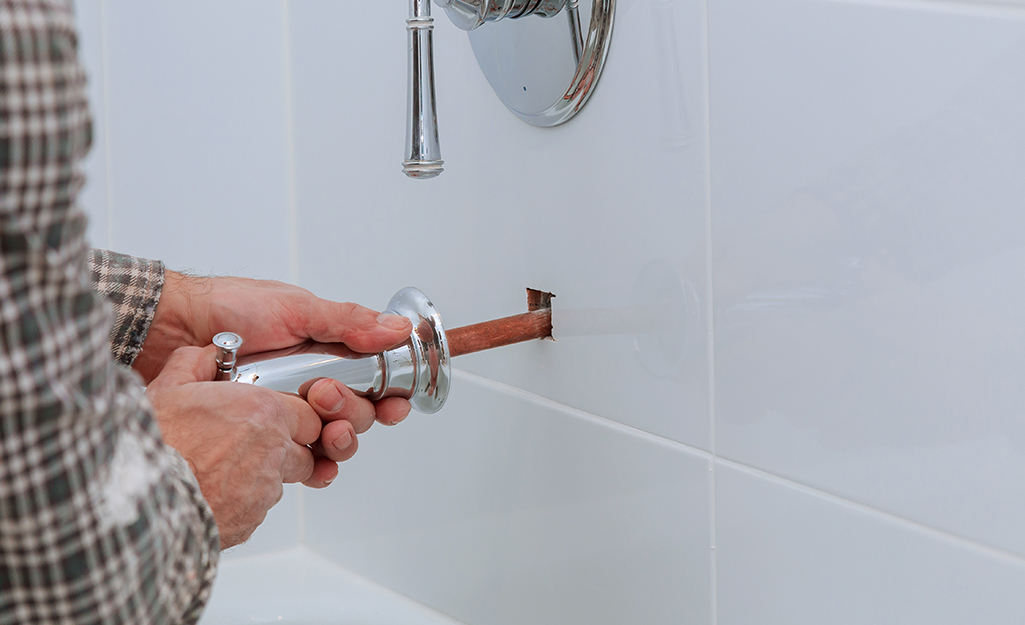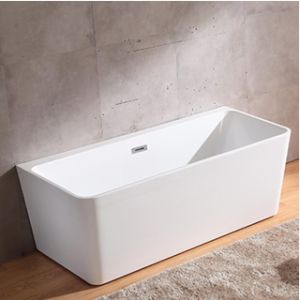What're your thoughts on How to Install a Bathtub: Install an Acrylic Tub and Tub Surround?

Setting up a tub isn't specifically rocket science, however it does need strong plumbing, woodworking, as well as often, tiling abilities. Changing an old tub with a new one is likewise a reasonably tough job. If the old tub is easily easily accessible, the job can relocate quickly; if you have to open a wall surface to get rid of the old bathtub and also place the new tub, the task is a lot harder. In either case, the job is within a home handyman's skills, although you will certainly need a helper to vacate the old tub as well as embeded in the new one. Make certain you have qualified on your own for the task and also fit attempting it. Instead of employing a specialist to take control of a halfway-completed job, it is far better to think about using one before you begin. Opportunities are you may require a specialist plumber to make tube connections.
This post will certainly aid you install a new tub in your bathroom if you have already purchased a brand-new bathtub and also do not require to change the arrangement of your previous supply of water pipes.
Your tools and material checklist ought to comprise the following:
Removing Old Taps
If you need to change old taps with brand-new ones as a part of your setup, then the first thing you must do is disconnect the water. After doing so, activate the taps to drain pipes any water continuing to be in the system. The process of eliminating the existing faucets can be fairly problematic because of the limited access that is usually the case.
Use a basin wrench (crowsfoot spanner) or a tap device to reverse the nut that attaches the supply pipelines to the faucets. Have a towel all set for the remaining water that will come from the pipelines. As soon as the supply pipelines have actually been gotten rid of, utilize the exact same tool to loosen the nut that holds the taps onto the bath/basin. You will certainly need to stop the solitary taps from transforming throughout this procedure. As soon as the faucets have been removed, the holes in the bath/basin will have to be cleaned up of any old sealing compound.
Before proceeding to fit the new taps, compare the pipe connections on the old faucets to the brand-new taps. If the old faucets are longer than the new faucets, then a shank adapter is required for the new faucets to fit.
Fitting New Touches
If the tails of the new faucets are plastic, then you will certainly require a plastic port to prevent damage to the string. One end of the connector fits on the plastic tail of the faucet and also the other end gives a connection to the existing supply pipes.
If you need to fit a monobloc, after that you will certainly require minimizing couplers, which attaches the 10mm pipeline of the monobloc to the common 15mm supply pipeline.
Next off, place the faucet in the placing opening in the bath/basin guaranteeing that the washers are in location between the tap and the sink. Secure the tap in position with the producer supplied backnut. When the tap is firmly in place, the supply pipes can be attached to the tails of the faucets. The taps can either be connected by utilizing corrugated copper piping or with normal faucet ports. The former kind ought to be attached to the tap finishes first, tightening up only by hand. The supply pipelines can later be connected to the various other end. Tighten both ends with a spanner after both ends have actually been attached.
Setting up the Bath tub
Utilizing the two wooden boards under its feet, place the bathtub in the called for setting. The wooden boards are handy in uniformly spreading the weight of the bath tub over the area of the boards rather than concentrating all the weight onto 4 tiny points.
The following objective is to guarantee that the bath tub is leveled all round. This can be achieved by inspecting the spirit level as well as readjusting the feet on the bath tub until the spirit level checks out degree.
To set up faucets, fit all-time low of the outermost adaptable faucet adapter to the ideal supply pipeline by making a compression sign up with; after that do the very same for the various other faucet.
Activate the water system as well as inspect all joints as well as new pipework for leaks and tighten them if necessary. Load the bath tub as well as additionally inspect the overflow outlet and the normal electrical outlet for leakages.
Lastly, fix the bathroom paneling as explained in the manufacturer's user's manual. Tiling and also sealing around the bath tub must wait until the bath tub has been made use of at least when as this will resolve it into its last position.
Planning for the Installation
First of all, the supporting framework provided with the bath needs to be fitted (if called for) according to the maker's instructions. Next off, fit the faucets or mixer to the bathtub. When fitting the faucet block, it is important to make certain that if the faucet comes with a plastic washer, it is fitted between the bathroom and also the faucets. On a plastic bath, it is also sensible to fit a supporting plate under the taps system to avoid pressure on the bath tub.
Fit the adaptable faucet adapters to the bottom of the two taps using 2 nuts and olives (often supplied with the tub). Fit the plug-hole outlet by smearing mastic filler round the sink outlet opening, and afterwards pass the electrical outlet through the hole in the bathroom. Make use of the nut provided by the producer to fit the plug-hole. Analyze the plug-hole electrical outlet for an inlet on the side for the overflow pipeline.
Next, fit the end of the adaptable overflow pipe to the overflow electrical outlet. After that, screw the pipeline to the overflow face which must be fitted inside the bath. See to it you utilize all of the provided washers.
Attach the trap to the bottom of the waste electrical outlet on the bath tub by winding the thread of the waste electrical outlet with silicone mastic or PTFE tape, as well as screw on the catch to the outlet. Attach the bottom of the overflow tube in a comparable manner.The bathroom ought to currently prepare to be suited its final setting.
Tiling Around the Bath tub
In the area where the bathroom fulfills the tile, it is needed to secure the joins with a silicone rubber caulking. This is essential as the installation can move sufficient to split a stiff seal, causing the water to pass through the wall between the bath and also the tiling, bring about complications with dampness as well as possible leakages to the ceiling listed below.
You can select from a selection of coloured sealers to assimilate your components and also installations. They are marketed in tubes and also cartridges, as well as can sealing spaces up to a width of 3mm (1/8 inch). If you have a bigger void to load, you can fill it with spins of drenched newspaper or soft rope. Keep in mind to always load the bath tub with water before sealing, to permit the motion experienced when the tub remains in usage. The sealer can break fairly very early if you do not take into consideration this motion prior to securing.
Alternatively, ceramic coving or quadrant floor tiles can be utilized to border the bath or shower tray. Plastic strips of coving, which are easy to use as well as cut to dimension, are also quickly available on the market. It is advisable to fit the ceramic tiles making use of water-resistant or water-proof adhesive as well as grout.
Bathtub Installation
How Important Is A Bathtub To Your Home?
High-quality baths, showers, and other bathroom updates are necessary when considering a smart investment in your home. It’s a room that you go to every day and one that is constantly being used by guests.The bathroom is one of the top trafficked rooms in a home and also one of the most valuable in terms of home resale.
Install Piping Before Tub
You will be using your existing drain and waste vent system, but pipes required include the hot and cold water supply lines and a pipe leading to a shower head. A mixing valve and shower head are also needed. Air chambers may be required.
Position the Tub
Lower the tub into place so that the continuous flange fits against the wall studs and rests on 1’x4' or 2’x4' supports. Anchor the tub to the enclosure with nails or screws inserted through the flanges into the studs.
NOTE: Remember, bathtubs and shower stalls may require support framing. A bathtub filled with water is extremely heavy, so check building codes and framing support before installing the tub.
Assemble Drain Connections
Assemble the bathtub drain connections by connecting the tub overflow with the tub drain above the trap, not beyond it. The trap will have a compression fitting that screws over the arm of the overflow assembly.
Place a Pipe For the Shower Head
First, locate a brass female threaded winged fitting and attach it to a framing support via a screw or a nail. Then run a pipe up the wall for the shower head. Sweat or solder the other side of the brass fitting to the top of the pipe.
Attaching Hot and Cold Water Lines
Attach your water lines for both hot and cold by sweating these directly into the hot and cold ports of the mixing valve. The mixing valve will be how water enters the tub’s system, not by the pipes themselves.
Install the Spout
Extend a piece of 1/2 inch pipe, or whichever length is specified in the manufacturer’s instructions, for the tub spout. Sweat on a male threaded fitting at the end of the pipe or use a brass nipple of the proper length and a 1/2 inch cap.
NOTE: At this point you should have your rough-in plumbing work inspected before proceeding further.
Check For Leaks
Restore the water pressure and check the drain connection and the supply pipes for any sign of leaking.
estore the Bathroom Wall
Replace the wall with moisture-resistant drywall as a base for your wall covering. Seal the joints between the wall and your new tub with silicone caulk as protection against water seepage.
https://www.berkeys.com/2016/12/02/bathtub-installation-dallas/

Hopefully you enjoyed our topic about How to Install a Bathtub. Thanks a ton for taking a few minutes to read our article. You should take a moment to distribute this blog entry if you enjoyed it. I appreciate reading our article about How to Install a Bathtub Yourself.
Precision and quality here.